
The Silver Dart was a derivative of an early aircraft built by a Canadian/U.S. team, which after many successful flights in Hammondsport, New York, earlier in 1908, was dismantled and shipped to Baddeck, Nova Scotia. It was flown from the ice of Baddeck Bay, a sub-basin of Bras d'Or Lake, on 23 February 1909, making it the first controlled powered flight in Canada. The aircraft was piloted by one of its designers, Douglas McCurdy. The original Silver Dart was designed and built by the Aerial Experiment Association (AEA), which had been formed under the guidance of Dr. Alexander Graham Bell.

Baddeck is a village on Cape Breton Island in northeastern Nova Scotia, Canada. It is situated in the center of Cape Breton, approximately 6 km east of where the Baddeck River empties into Bras d'Or Lake.
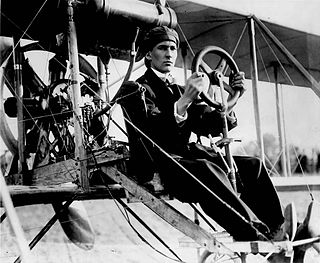
The Aerial Experiment Association (AEA) was a Canadian-American aeronautical research group formed on 30 September 1907, under the leadership of Dr. Alexander Graham Bell.
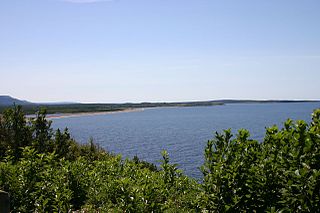
Bras d'Or Lake is an irregular estuary in the centre of Cape Breton Island in Nova Scotia, Canada. It has a connection to the open sea, and is tidal. It also has inflows of fresh water from rivers, making the brackish water a very productive natural habitat. It was designated the Bras d'Or Lake Biosphere Reserve by UNESCO in 2011.

The Cygnet was an extremely unorthodox early Canadian aircraft, with a wall-like "wing" made up of 3,393 tetrahedral cells. It was a powered version of the Cygnet tetrahedral kite designed by Dr Alexander Graham Bell in 1907 and built by the newly founded Aerial Experiment Association.

Gilbert Hovey Grosvenor, was the first full-time editor of the National Geographic magazine (1899–1954). Grosvenor is credited with having consolidated the nascent magazine.

John Alexander Douglas McCurdy, was a Canadian aviation pioneer and the 20th Lieutenant Governor of Nova Scotia from 1947 to 1952.

JA Douglas McCurdy Sydney Airport is a regional airport located in Reserve Mines in the Canadian province of Nova Scotia. The airport serves the Cape Breton Regional Municipality (CBRM) and the surrounding areas of Cape Breton Island. McCurdy Sydney Airport has the distinction of being the oldest public airport in Nova Scotia, first licensed on August 3, 1929.
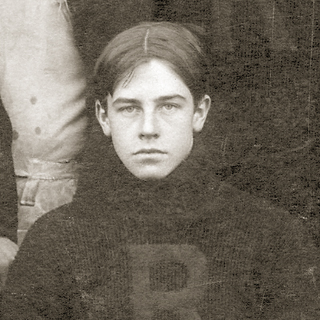
Frederick Walker Baldwin, also known as Casey Baldwin, paternal grandson of Canadian reform leader Robert Baldwin, was a hydrofoil and aviation pioneer and partner of the famous inventor Alexander Graham Bell. He was manager of Graham Bell Laboratories from 1909–32, and represented Victoria in the Nova Scotia Legislature from 1933–37, where he was instrumental in bringing about the creation of Cape Breton Highlands National Park. In 1908, he became the first Canadian and British subject to fly an airplane.

Mabel Gardiner Hubbard Bell was an American businesswoman, and the daughter of Boston lawyer Gardiner Green Hubbard. She was the wife of Alexander Graham Bell, inventor of the first practical telephone.
The Cruising Club of America (CCA) is an international organization of cruisers whose objects are to promote cruising and racing by amateurs, to encourage the development of suitable types of cruising craft, to stimulate interest in seamanship, navigation and handling small vessels, and to keep on file all information which may be of assistance to members in cruising in any waters.
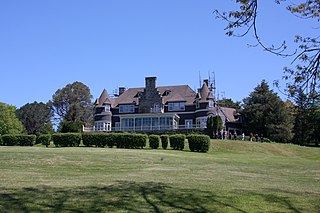
Beinn Bhreagh is the name of the former estate of Alexander Graham Bell, in Victoria County, Nova Scotia, Canada. It refers to a peninsula jutting into Cape Breton Island's scenic Bras d'Or Lake approximately three kilometres southeast of the village of Baddeck, forming the southeastern shore of Baddeck Bay.

Alexander Graham Bell National Historic Site is a 10-hectare (25-acre) property in Baddeck, Cape Breton, Nova Scotia, Canada, overlooking the Bras d'Or Lakes. The site is a unit of Parks Canada, the national park system, and includes the Alexander Graham Bell National Historic Site, which contains the largest repository of artifacts and documents from Bell's years of experimental work in Baddeck. This site was designated a National Historic Site in 1952.

Gilbert H. Grosvenor Hall is a historic building in Baddeck, Nova Scotia, Canada. The 19th-century building has served as a post office, library, and interpretive centre.
Baddeck, Nova Scotia is a village founded in 1908, with a history stretching back to early Mi'kmaq, French, and British settlements. The village was home to Alexander Graham Bell and was witness to the first flight in the commonwealth with Bell's Silver Dart.

The Telegraph House is a historic hotel located in Baddeck, Nova Scotia.

Mabel Harlakenden Grosvenor was a Canadian-born American pediatrician. She was a granddaughter and secretary to the scientist and telephone pioneer Alexander Graham Bell. She lived in both Beinn Bhreagh, Nova Scotia and Washington, D.C.

HD-4 or Hydrodome number 4 was an early research hydrofoil watercraft developed by the scientist Alexander Graham Bell. It was designed and built at the Bell Boatyard on Bell's Beinn Bhreagh estate near Baddeck, Nova Scotia. In 1919, it set a world marine speed record of 70.86 miles per hour (114.04 km/h).
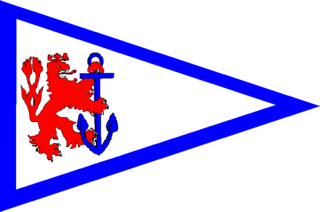
Dobson Yacht Club (DYC) is a private yacht club based in Westmount, Nova Scotia, Canada. The Dobson Yacht Club sits on the western shore of the South Arm of Sydney Harbour, directly opposite the Sydney downtown area, part of the Cape Breton Regional Municipality. Its location on the chart is shown as Dobson's Point, formerly known as Shingle Point.
The Bell Boatyard was a boatbuilding facility which operated as part of Alexander Graham Bell's laboratories in Baddeck, Nova Scotia from 1885 to 1928. The boatyard built experimental craft, lifeboats and yachts during the first part of the twentieth century. The Bell yard was notable for its dual focus on both experimental and traditional boats and for its employment of large numbers of female boatbuilders.


















